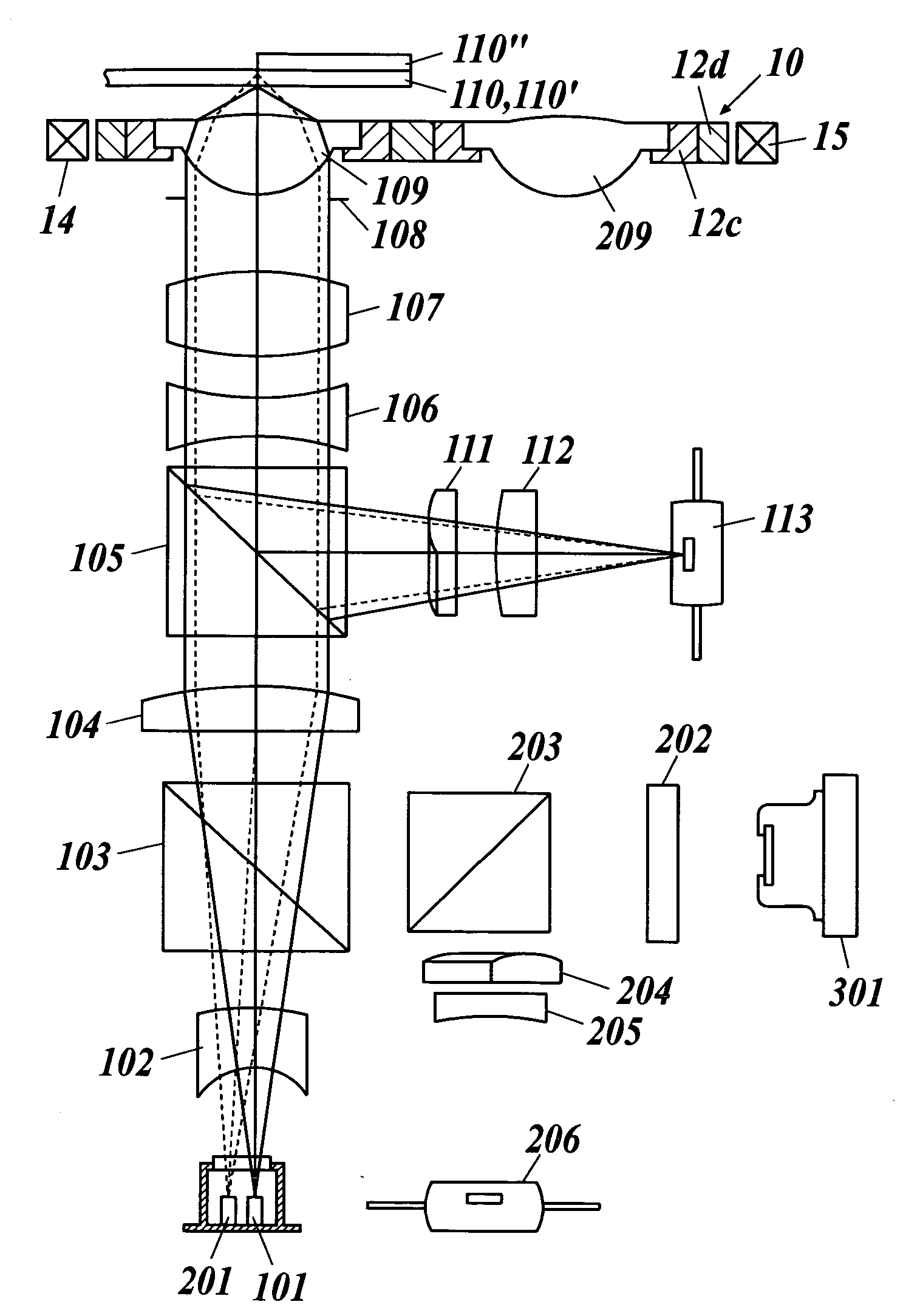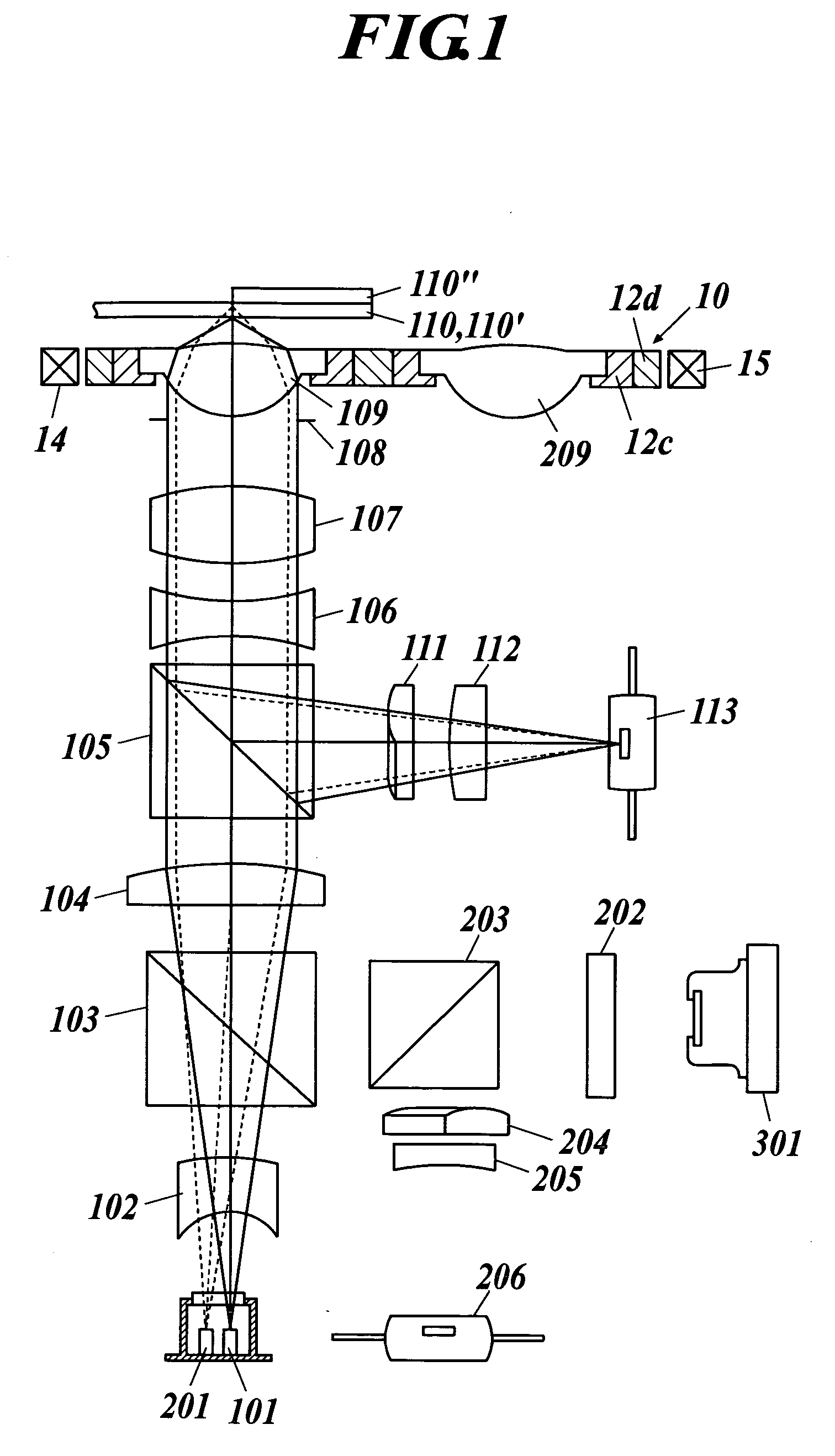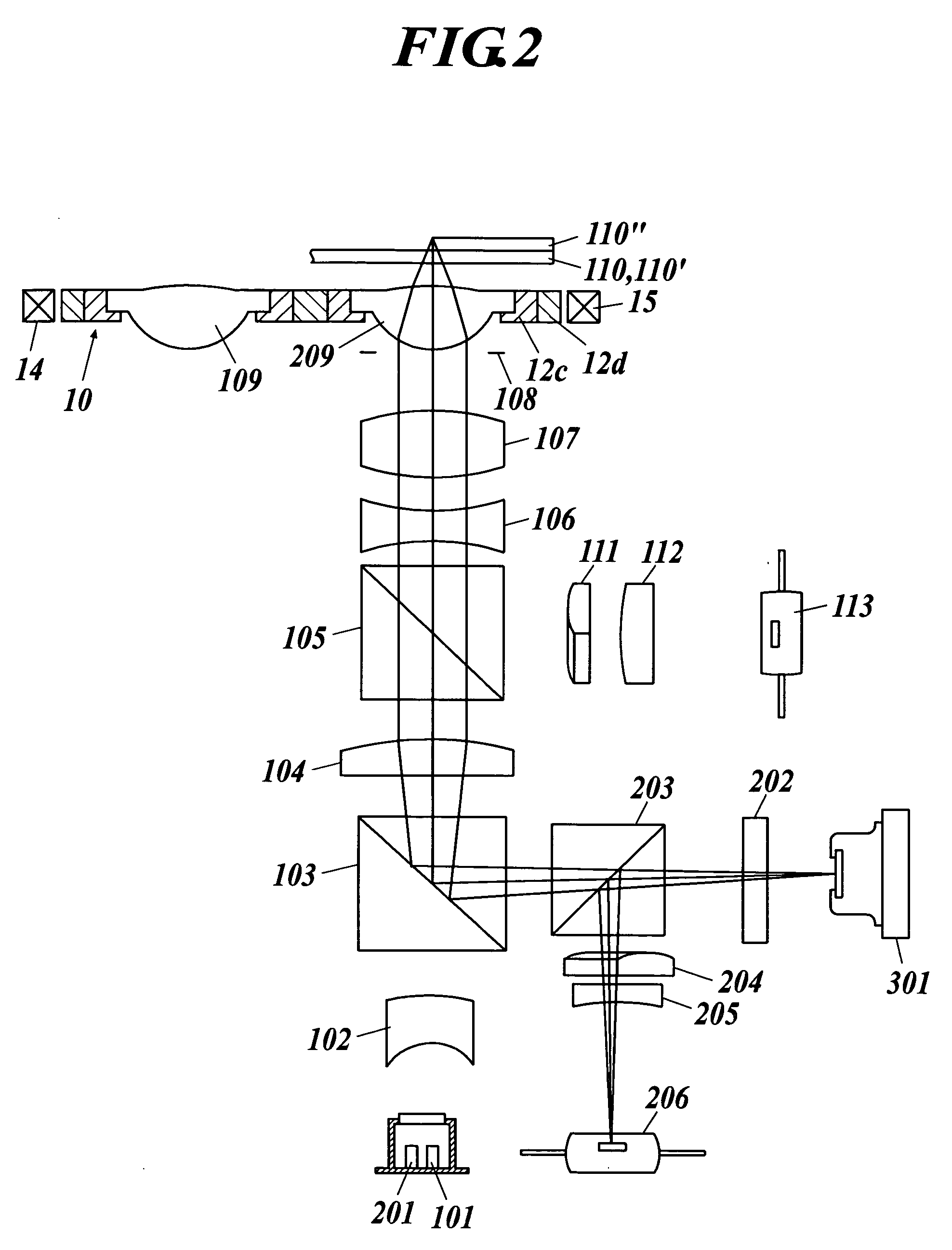Optical pickup apparatus
a pickup apparatus and optical technology, applied in the field of optical pickup apparatus, can solve the problems of complex configuration enlargement of the size, and insufficient value of the product of the optical pickup apparatus, so as to suppress the deviation of the temperature on the optical surface, and reduce the risk of entanglemen
- Summary
- Abstract
- Description
- Claims
- Application Information
AI Technical Summary
Benefits of technology
Problems solved by technology
Method used
Image
Examples
Embodiment Construction
[0039] In the present invention, the description “a variation of each of a coma aberration and an astigmatism is not more than 0.02 λrms” means that the maximum value of the variations of a coma aberration and an astigmatism is 0.02 λrms or less when recording and / or reproducing are preformed by using a light source emitting a light flux of a wavelength λ by an optical pickup apparatus in comparison with the coma aberration and the astigmatism at the time of not driving the optical apparatus.
[0040] In the optical pickup apparatus mentioned above, it is preferable that the supporting member is driven by an actuator at the time of performing information recording and / or information reproducing to either of the first and the second information recording media. The more simplification of the optical pickup apparatus can be achieved by such a configuration in comparison with the case where the objective optical elements are severally driven by actuators. On the other hand, because the l...
PUM
| Property | Measurement | Unit |
|---|---|---|
| diameter | aaaaa | aaaaa |
| diameter | aaaaa | aaaaa |
| diameter | aaaaa | aaaaa |
Abstract
Description
Claims
Application Information
 Login to View More
Login to View More - R&D
- Intellectual Property
- Life Sciences
- Materials
- Tech Scout
- Unparalleled Data Quality
- Higher Quality Content
- 60% Fewer Hallucinations
Browse by: Latest US Patents, China's latest patents, Technical Efficacy Thesaurus, Application Domain, Technology Topic, Popular Technical Reports.
© 2025 PatSnap. All rights reserved.Legal|Privacy policy|Modern Slavery Act Transparency Statement|Sitemap|About US| Contact US: help@patsnap.com



